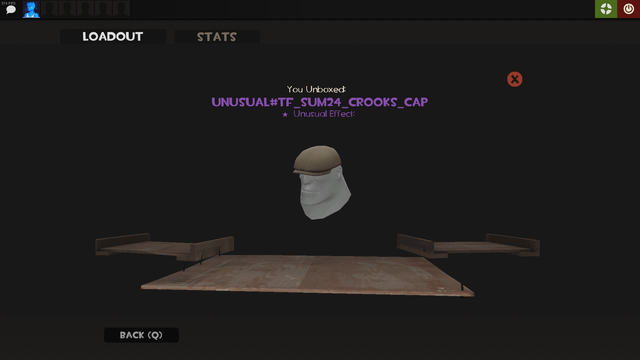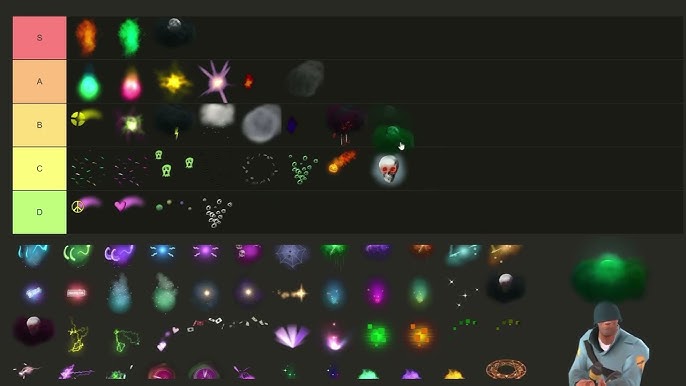From Trinkets to Treasure: Inside the Bizarre World of TF2 Hats and its Player-Driven Economy Remember that first time you saw a Team Fortress 2 character sporting a hat with orbiting planets?

Remember that first time you saw a Team Fortress 2 character sporting a hat with orbiting planets? I do. Back in 2011, it was mind-blowing. A simple cosmetic item suddenly transformed into a status symbol, a virtual flex. Little did I know, as a fresh-faced item server admin for a TF2 community boasting hundreds of daily players, I was about to dive headfirst into a virtual economy more complex and unpredictable than many real-world markets. The most expensive item I ever saw traded on my server? A Burning Flames Team Captain. The sheer absurdity of its value – driven by rarity and pure, unadulterated demand – was a wake-up call. Over the next three years, I witnessed firsthand the rise and evolution of this strange, beautiful, and sometimes terrifying digital ecosystem. And after a decade in the game industry, I'm here to share some insider knowledge about the wild ride that is the TF2 hat economy.
The Genesis of the TF2 Economy
The Big Bang of the Team Fortress 2 economy occurred with the Mann-Conomy Update. Suddenly, items weren’t just rewards for playing; they were commodities. Valve introduced trading, crates, and, crucially, keys. These keys, initially valued at around $2.50 USD each, became the de facto currency of this new world. Item drops, once a simple reward, now held potential value.
The initial reaction was a mix of confusion and excitement. Some players were overwhelmed, unsure what to make of this sudden influx of tradable items. Others were immediately hooked, recognizing the potential for profit and the allure of rare and unique cosmetics. Early trading communities sprang up like mushrooms after a rain, with sites like backpack.tf becoming essential resources for price checking and trade organization. It felt like the Wild West, a digital gold rush where fortunes could be made (and lost) overnight. The early challenges were primarily technical, dealing with item duplication glitches and exploits, but the potential was exciting.

Unusual Effects: The Allure of the Particle
At the heart of the TF2 economy lies the Unusual hat. These hats, obtained by unboxing crates with keys, possess unique particle effects that orbit or emanate from the hat. The allure is simple: they look cool, and they're rare.
The rarity is tiered, from common effects like flies buzzing around your head to god-tier effects like Burning Flames, Scorching Flames, and Vivid Plasma. Opening a crate and seeing flies was, in the early days, crushing to most players who thought they had won the lottery. The psychology behind the desire for Unusuals is fascinating. It's not just about aesthetics; it's about status. An Unusual hat is a virtual badge of honor, a signal that you're either lucky, wealthy, or both. I knew players who spent hundreds, even thousands, of dollars chasing that perfect Unusual. One player I knew, obsessed with the Pyro, literally remortgaged part of his home to get a Burning Flames Brigade Helm. I'm not kidding. And effects like Nuts n' Bolts? They were seen as... less desirable, to put it mildly. The appeal lay in exclusivity and social recognition, and those high tier effects, while some were "uglier" than others, conveyed status like few other items could.

Burning Flames Team Captain: A Case Study in Value
The Burning Flames Team Captain. Just saying the name evokes a sense of awe (and maybe a little envy) in any TF2 aficionado. It's the ultimate status symbol, the Holy Grail of TF2 hats. Estimates vary, but it's believed that fewer than 40 of these exist. Its value stems from a perfect storm of rarity, aesthetic appeal, and the hat's inherent popularity.
Its exorbitant price isn't just about scarcity; it's about demand. The Team Captain is a universally appealing hat, worn by all classes. Couple that with the striking Burning Flames effect, and you have an item that every serious collector wants. I remember countless forum posts on sites like TF2Outpost, with players offering hundreds of keys, even thousands of dollars, for a chance to own one. The stories surrounding this hat are legendary. Rumors of scams, price manipulation, and even real-world deals involving tens of thousands of dollars circulated constantly. One particularly memorable rumor involved a dispute between two wealthy collectors that supposedly ended with a lawsuit! While I can't verify the truth of that, it speaks volumes about the intensity surrounding this virtual item. Other highly valued hats included the Steaming Team Captain and Scorching Flames Brigade Helm – both sought after for their unique effects and the popularity of the base hat.

Server Management: Behind the Scenes of the Economy
Running an item server for a large TF2 community was like being a central banker in a nation of digital hats. My responsibilities ranged from managing item drops and trade requests to dealing with the inevitable influx of scammers and exploiters.
One of the biggest challenges was preventing item duplication. We had to constantly monitor server logs and player inventories for suspicious activity. Scammers were a constant nuisance, employing everything from phishing scams to elaborate confidence tricks to steal valuable items. IP bans were our primary weapon, but they were only a temporary solution. Price manipulation was another headache. Shady players would use alternate accounts to artificially inflate or deflate the price of certain items, manipulating the market for their own gain.
To combat these issues, we developed custom scripts and plugins. These tools allowed us to track item movements, monitor trade patterns, and identify potential scammers. We also relied heavily on community reports. The players were our eyes and ears, alerting us to suspicious activity and helping us maintain a fair and stable economy. One particularly bizarre request I remember was someone complaining that he received the wrong unusual effect after uncrating -- as if we could control the RNG gods!

The Australium and Unusualifier: Injecting Chaos
Valve threw a wrench into the carefully balanced TF2 economy with the introduction of Australium weapons and Unusualifiers. Australium weapons, rare reskins with a golden sheen, added a new layer of desirability to existing items. Unusualifiers, on the other hand, allowed players to add unusual effects to taunts, creating a whole new market.
The impact on the existing unusual hat market was immediate. Initially, some feared that the influx of new unusual effects would devalue existing hats. However, this wasn't entirely the case. While some lower-tier unusuals saw a slight dip in price, the most desirable effects remained highly sought after. It added more chaos, more complexity, and more opportunities for both profit and loss. I remember one player unboxing an Australium Scattergun on his very first try. He posted about it on the server forums, and within minutes, he was flooded with trade offers. Conversely, I saw players spend hundreds of dollars on Unusualifiers without any luck, leading to some spectacular rage quits.

The Surf Community: Culture and Competition
The TF2 unusual trading scene fostered a vibrant community. Online forums, dedicated trading servers, and websites like TF2Outpost and Bazaar.tf became hubs for buyers and sellers. Key figures emerged – influential traders known for their vast inventories, keen market insights, and (sometimes) ruthless negotiation tactics.
I remember "HatGuy," a player on our server, who seemed to have an uncanny ability to predict market trends. His trades were legendary, and he amassed a collection that was the envy of the entire community. The social aspect of unusual trading was just as important as the economic one. Players formed friendships, alliances, and rivalries. It was a constant game of cat and mouse, with everyone trying to outsmart each other and snag the best deals. Surf and idle servers also played a role, providing a place for players to show off their hats and network with other traders.

TF2's Legacy: Enduring Appeal or Fleeting Fad?
The TF2 economy has had a profound impact on the game's longevity. It has kept players engaged for years, providing a constant stream of new goals and challenges. Its influence can be seen in other games with virtual economies, such as Counter-Strike: Global Offensive, where skin trading has become a multi-billion dollar industry.
But what about the future of TF2 item trading? Given the game's age and Valve's focus on other titles, it's hard to say. Will unusual hats retain their value? Or will they eventually become obsolete? My guess is that the core of the economy will persist. As long as there's a dedicated player base, there will be demand for rare and unique items. The TF2 economy is a testament to the power of player-driven markets and the enduring appeal of virtual status symbols.

Conclusion
The world of TF2 item trading is a bizarre, unpredictable, and utterly captivating place. From humble cosmetic trinkets, these items have evolved into valuable virtual assets, driving a complex and dynamic player-driven economy. As a former item server admin, I've seen firsthand the highs and lows, the triumphs and tragedies, of this strange digital world.
If you're considering diving into the TF2 item trading scene today, I urge you to proceed with caution. Do your research, learn the market, and be wary of scams. But also, embrace the absurdity, appreciate the community, and enjoy the ride. Who knows, you might just unbox that Burning Flames Team Captain of your dreams. Just don't remortgage your house for it.
